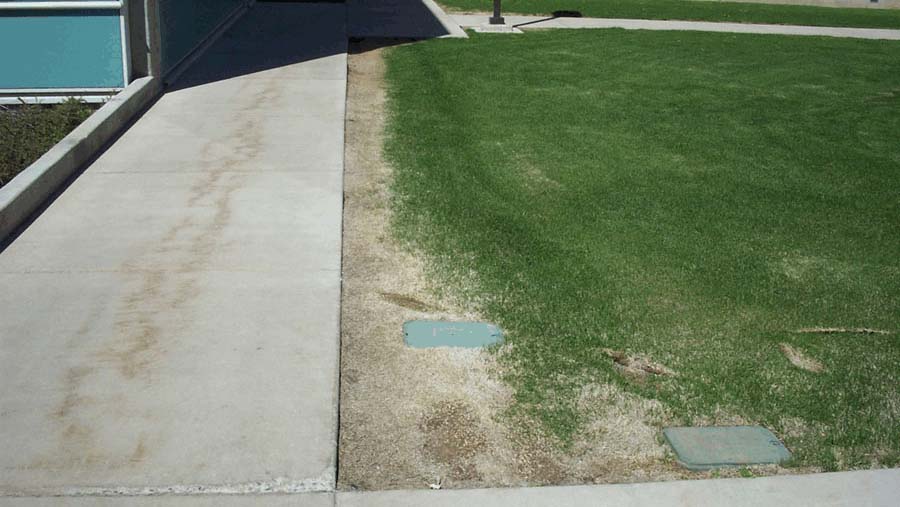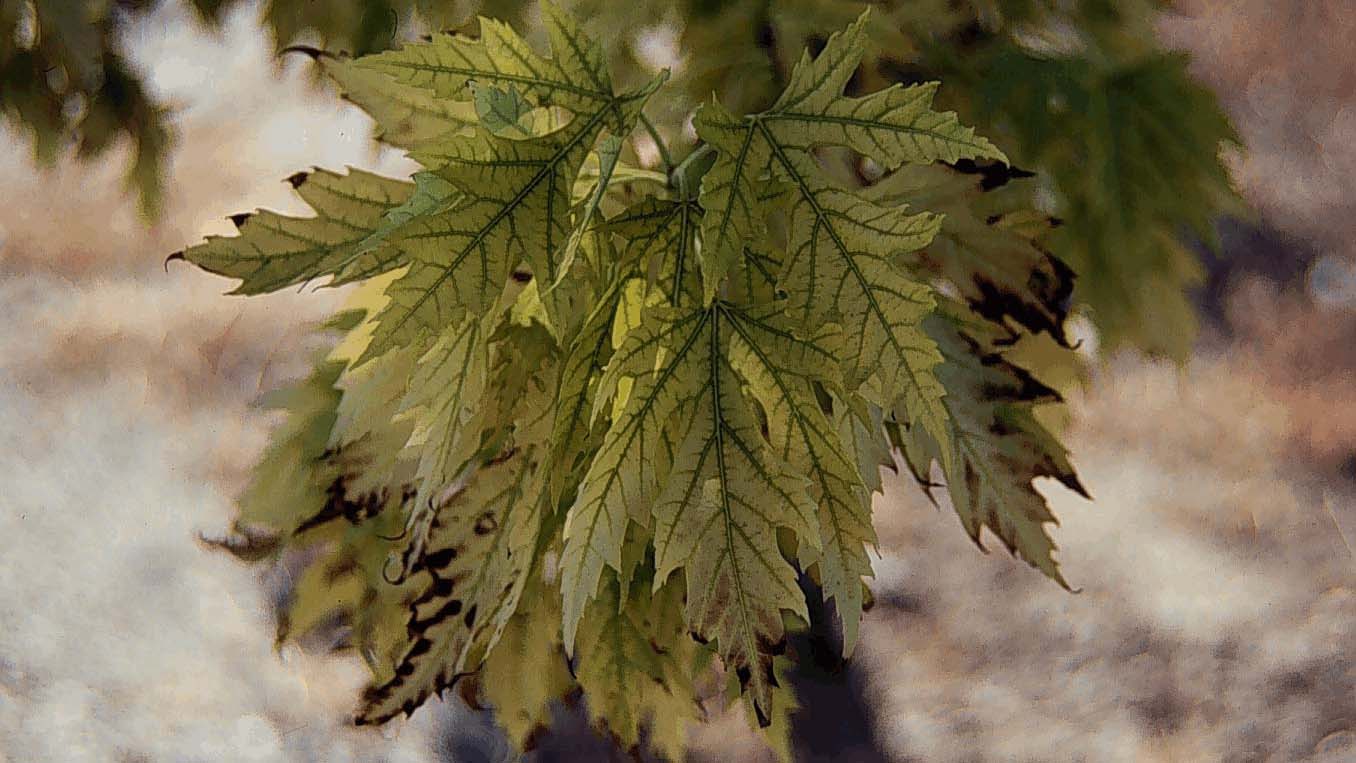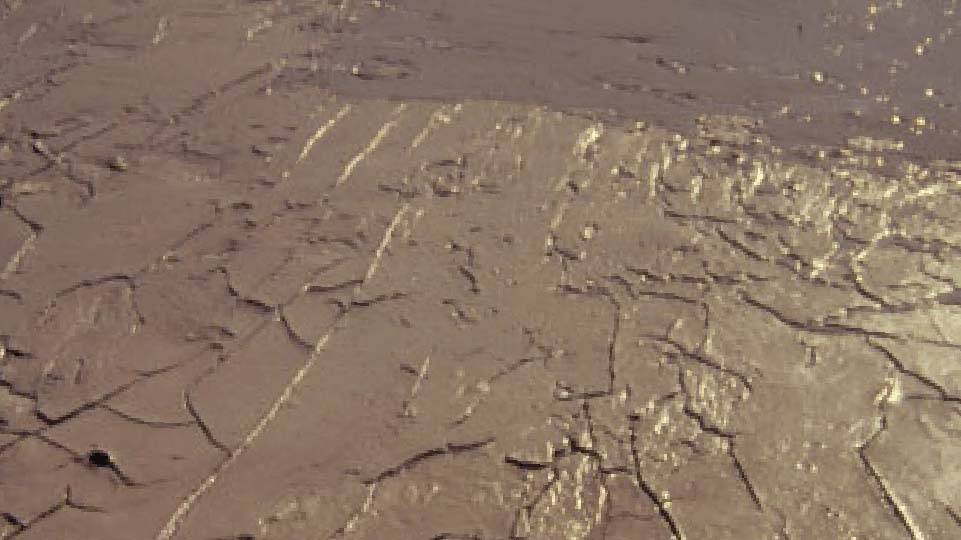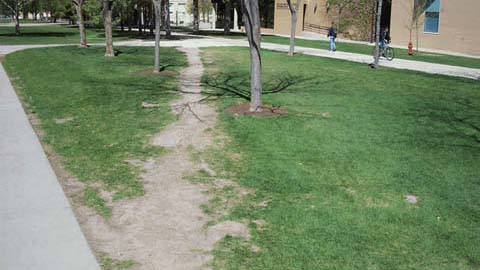Solutions to Soil Problems III. Drainage

Drainage is a common problem throughout Utah. Complex patterns of soil development, transport and deposition have resulted in excessively drained soils that are coarse-textured (sandy or rocky), and poorly drained soils that are fine-textured (silt and clay-dominated). Excessively drained are more common in higher elevation and bench areas. Poorly drained soils are more common in low elevation and valley floor areas. Compaction and soil layering may also restrict drainage and are problems in areas of new development where heavy construction equipment is used and new soils are brought in for landscaping.
Extremes in drainage can cause plant growth problems. Excessive drainage subjects plants to frequent water stress if the irrigation system isn’t adjusted to apply water frequently but in small amounts to maintain a moist root zone. Poor drainage subjects plants to a perpetually wet root system, which can result in increased root disease, iron deficiency, and other growth problems.
Most drainage problems can be identified by inspecting the soil before planting. Extremely coarse- or fine-textured soils will have drainage problems. The presence of compacted soil layers can be identified using a soil probe, metal rod or shovel. Water pooling such as in a low spot in the landscape or a planting hole also indicates a drainage problem. Ideally, water will drain from a planting hole within 24 hours.
Living with a Soil Drainage Problem
Certain plants are adapted to excessive drainage conditions. These are typically desert species that tolerate extended periods of drought. Other plants adapt to poorly drained soil conditions. Species commonly found in swampy or high water table areas may tolerate such conditions. Table 1 lists common landscape plants and their soil drainage requirements.
Alterning Soil Drainage
The following cultural and managerial practices can be used to alter soil drainage:
- Amend the soil with organic matter. Organic matter universally improves the water holding capacity of excessively-drained, sandy soils, and improves drainage in fine-textured soils. Incorporate organic matter as deep as possible, or consider double digging to increase the depth of organic matter additions.
- Install subsurface tile drains. A tile drain is a length of perforated plastic pipe buried 12 to 18 inches beneath the soil surface. Excess soil water enters the pipe and is conducted to an open ditch or gutter out of plant root zones. Many home improvement stores carry tile drain supplies. Manufacturers can also be found on the internet.
- Install vertical drains in planting holes. A vertical drain or “dry well” is a hole 4 to 6 inches in diameter and 3 to 5 feet deep dug in the bottom of a tree or shrub planting hole. A soil bucket auger or post hole digger can be used to excavate the hole. The hole is filled with coarse gravel to provide a drainage outlet for water that might otherwise pool in the bottom of a planting area.
- Construct raised (for poor drainage) or sunken (for excessive drainage) beds. Raised beds or planting on hills or berms raises a part of the plant root system above the native, poorly drained soil. Beds 8 to 12 inches high are adequate for many garden plants while hills or berms 2 to 3 feet high are better for woody plants. Sunken beds channel more water to plants growing in excessively drained conditions.
- Mix layered soils. Where new soils are placed on top of existing soils first place a 2 to 3-inch layer of the new soil, mix thoroughly with the existing soil, and place the remainder of the new soil on top.
Utah State University Extension
Peer-reviewed fact sheet
Download PDF
Authors
Michael Johnson, Grand County Extension Agent and Rich Koenig, Extension Soil Specialist
Related Research






